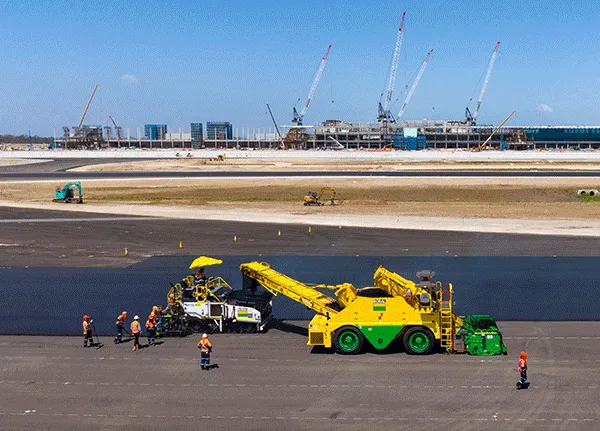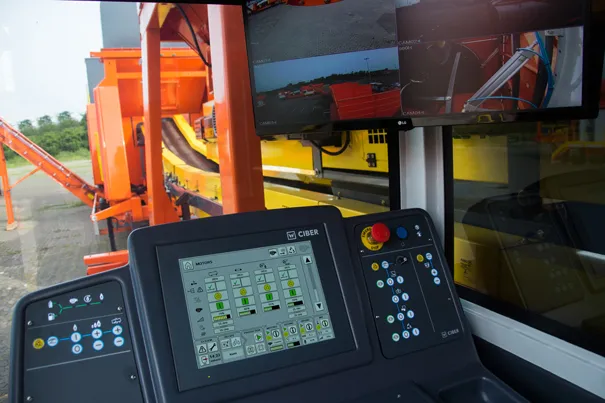The firm first introduced its Guardian telematics system on the Shuttle Buggy some years ago, but has continued to develop the capabilities of this package. The addition of more sensors within the Shuttle Buggy at key points allows performance and wear to be monitored remotely. An important new feature is the sensors installed in the conveyor system, explained Eric Baker, the firm’s director of marketing. This allows the customer to track the wear and tear of the individual components on the conveyor. Parts can be replaced before they wear out and during scheduled maintenance periods, without risking costly downtime during operation. This same sensor system is fitted inside the machine too, so that the user can track the wear of the chains, floor and augers, so as to maximise utilisation.
Roadtec president John Irvine said: “We received a patent on that. You can tell how many tonnes are going through the machine so you can tell when you need to rebuild the conveyor.” He added that this is a particularly important feature for countries or states with abrasive rock, such as Sweden or New Zealand or US states like Georgia. Irvine continued: “The conveyor slats are taller but move slower, so they wear less but carry more material.”
Meanwhile other features designed to increase wear resistance inside the machine’s mixing area include chromium carbide wear liners and augers, while chain capacity has been increased.
Roadtec also offers a range of optional features for the Shuttle Buggy, including tyre spraying, an engagement system for trucks, a hopper level indicator, a lighting kit for night use and a lubrication system.
Roadtec’s improved Shuttle Buggy offers increased uptime
A key development for the latest version of Roadtec’s Shuttle Buggy material transfer vehicle is its improved uptime. As Roadtec continues to develop this machine, it is improving performance and capabilities, boosting output while lowering running costs.
The firm first introduced its Guardian telematics system on the Shuttle Buggy some years ago, but has continued to develop the capabilities of this package. The addition of more sensors within the Shuttle Buggy at key points allows performance and wear to
April 23, 2018
Read time: 2 mins
A key development for the latest version of 1252 Roadtec’s Shuttle Buggy material transfer vehicle is its improved uptime. As Roadtec continues to develop this machine, it is improving performance and capabilities, boosting output while lowering running costs.








